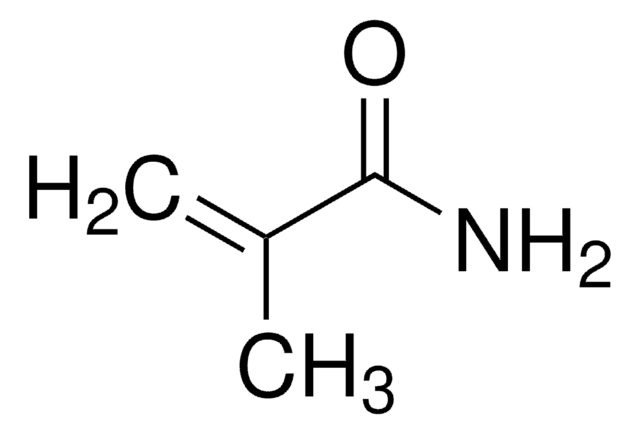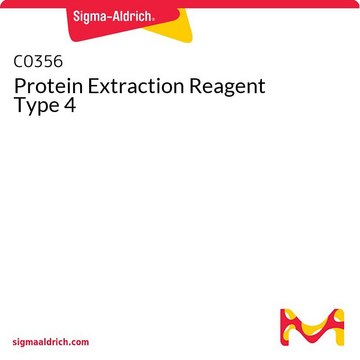A3221
Iodoacétamide
Single use vial of 56 mg
Synonyme(s) :
2-Iodoacetamide, IAA, Monoiodoacetamide, alpha-Iodoacetamide
About This Item
Produits recommandés
Source biologique
synthetic (organic)
Essai
≥99% (HPLC)
Forme
powder
Conditionnement
vial of 56 mg (Single use)
Conditions de stockage
(Tightly closed. Dry. Keep in a well-ventilated place. Keep locked up or in an area accessible
only to qualified or authorized persons.)
Couleur
white to off-white
Pf
92-95 °C (lit.)
Solubilité
H2O: soluble 50 mg/mL, clear, colorless to faintly yellow
Adéquation
suitable for LC-MS
Application(s)
microbiology
Température de stockage
2-8°C
Chaîne SMILES
NC(=O)CI
InChI
1S/C2H4INO/c3-1-2(4)5/h1H2,(H2,4,5)
Clé InChI
PGLTVOMIXTUURA-UHFFFAOYSA-N
Vous recherchez des produits similaires ? Visite Guide de comparaison des produits
Description générale
It has specific interactions with cysteine and histidine residues in proteins, affecting enzymes like ribonuclease. While it may react slowly with histidine, its inhibitory properties contribute to the research on proteases, such as cysteine proteases. Iodoacetamide is known for its irreversibility in inhibiting enzymes and its ability to form stable protein derivatives, making it valuable in studying protein structures, protein behavior, and enzyme inhibition.
Application
- to prevent enzymatic disulfide reduction in the protein samples
- to inhibit glyceraldehyde-3-phosphate dehydrogenase effectively blocking ATP production in cell biology research
Actions biochimiques/physiologiques
Caractéristiques et avantages
Conditionnement
Autres remarques
Informations légales
Produit comparable
Souvent commandé avec ce produit
Mention d'avertissement
Danger
Mentions de danger
Conseils de prudence
Classification des risques
Acute Tox. 3 Oral - Aquatic Chronic 4 - Resp. Sens. 1 - Skin Sens. 1
Code de la classe de stockage
6.1C - Combustible acute toxic Cat.3 / toxic compounds or compounds which causing chronic effects
Classe de danger pour l'eau (WGK)
WGK 3
Point d'éclair (°F)
Not applicable
Point d'éclair (°C)
Not applicable
Équipement de protection individuelle
Eyeshields, Faceshields, Gloves, type P2 (EN 143) respirator cartridges
Faites votre choix parmi les versions les plus récentes :
Certificats d'analyse (COA)
Vous ne trouvez pas la bonne version ?
Si vous avez besoin d'une version particulière, vous pouvez rechercher un certificat spécifique par le numéro de lot.
Déjà en possession de ce produit ?
Retrouvez la documentation relative aux produits que vous avez récemment achetés dans la Bibliothèque de documents.
Les clients ont également consulté
Articles
In this study, we developed a rapid trypsin digest kit that, at elevated temperatures, yielded reliable, reproducible results in less than 2 hours on a wide variety of substrates for mass spectrometry.
Notre équipe de scientifiques dispose d'une expérience dans tous les secteurs de la recherche, notamment en sciences de la vie, science des matériaux, synthèse chimique, chromatographie, analyse et dans de nombreux autres domaines..
Contacter notre Service technique











